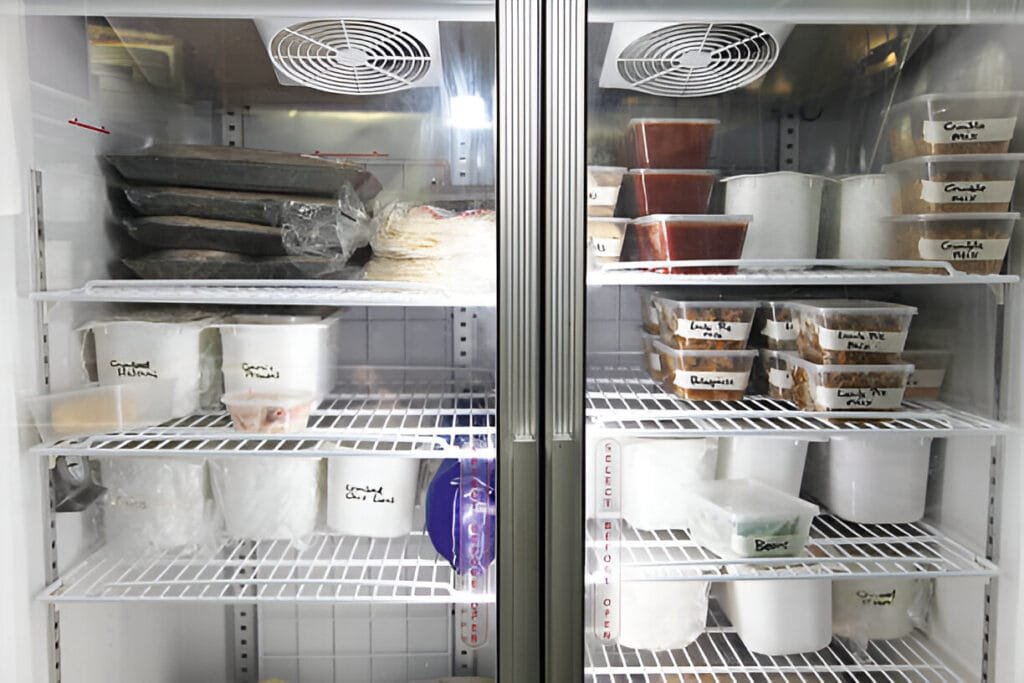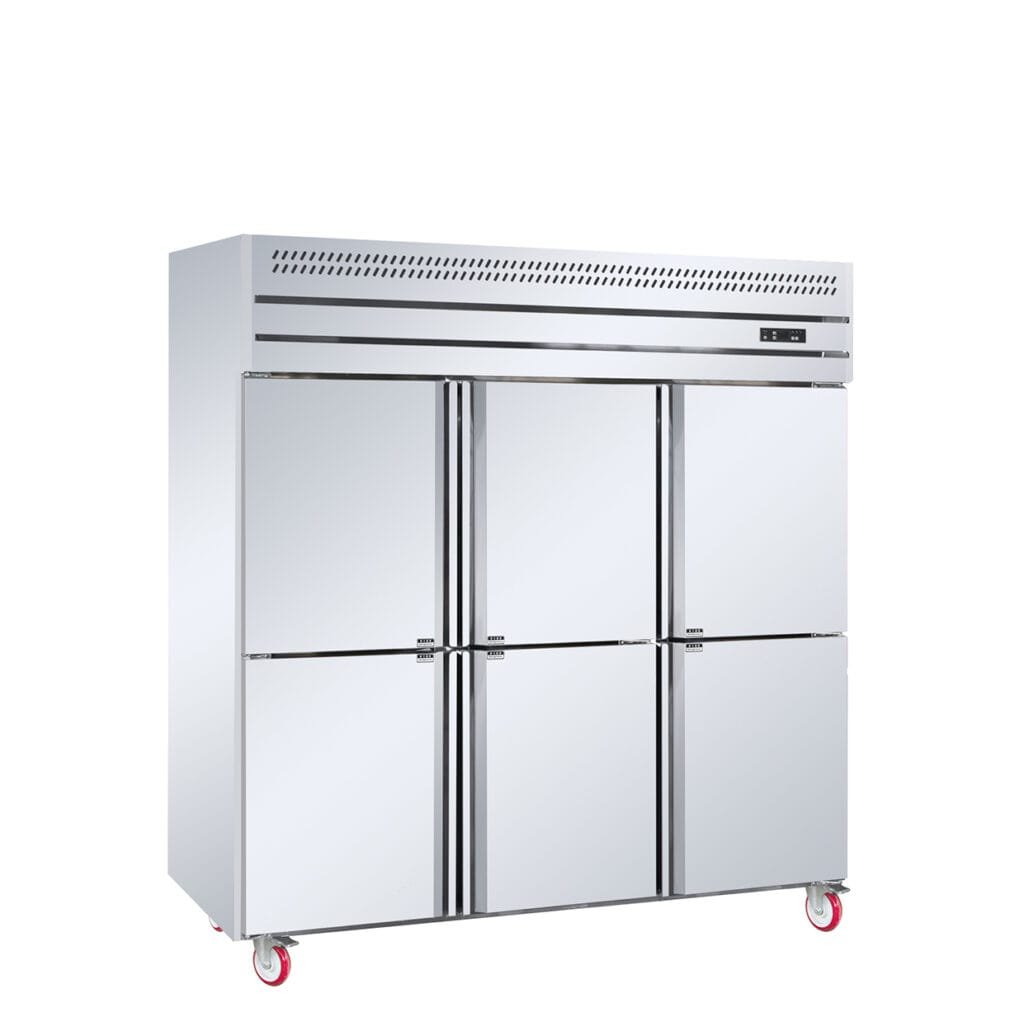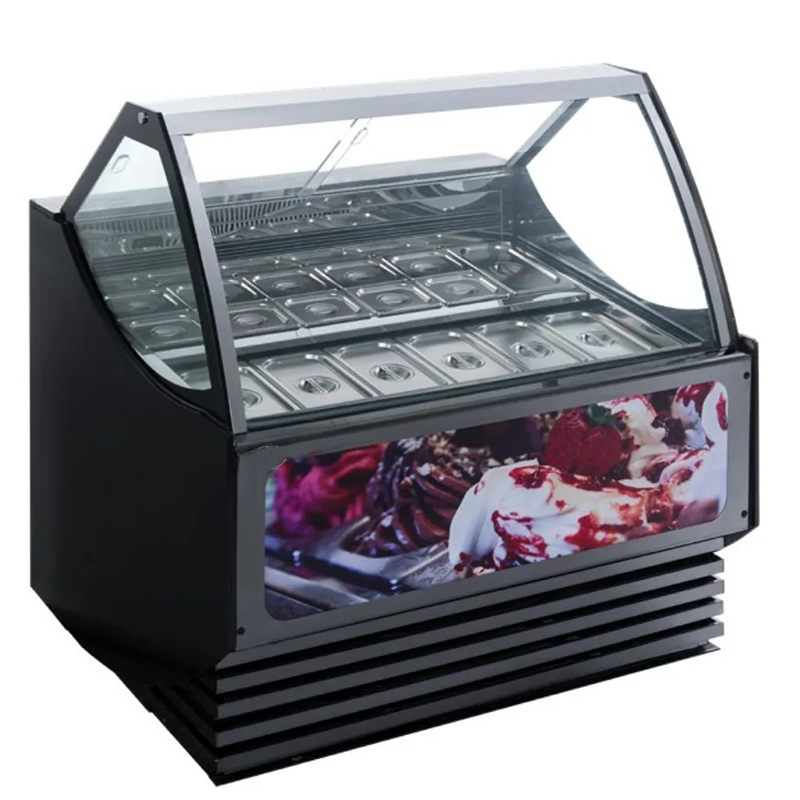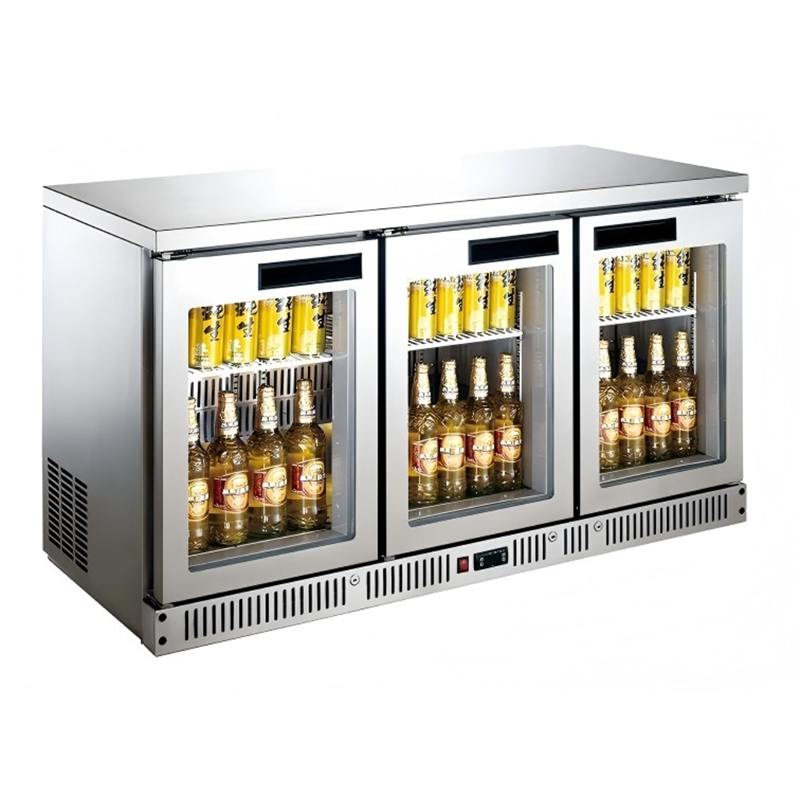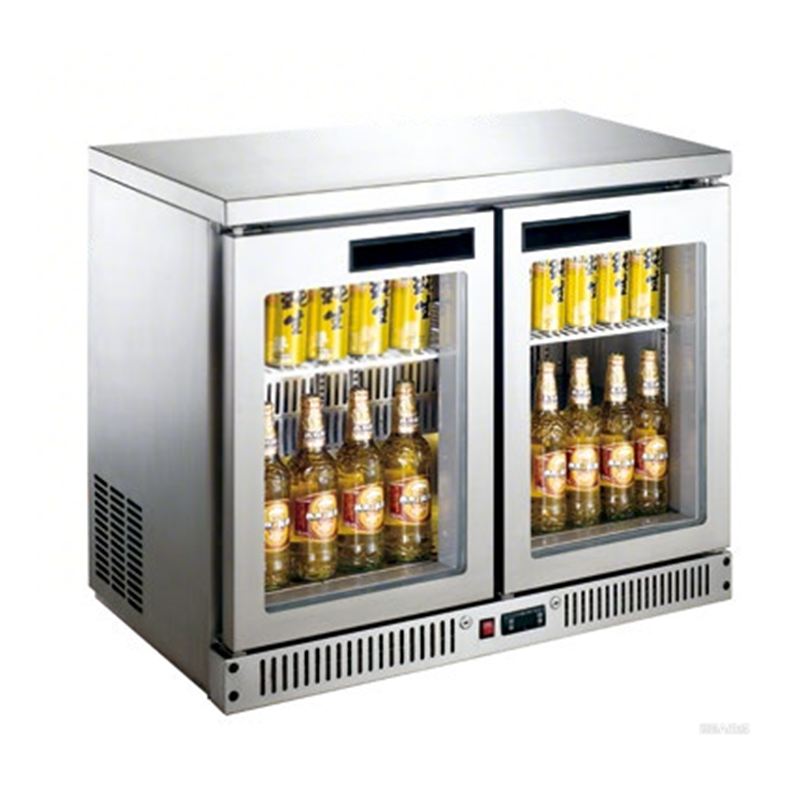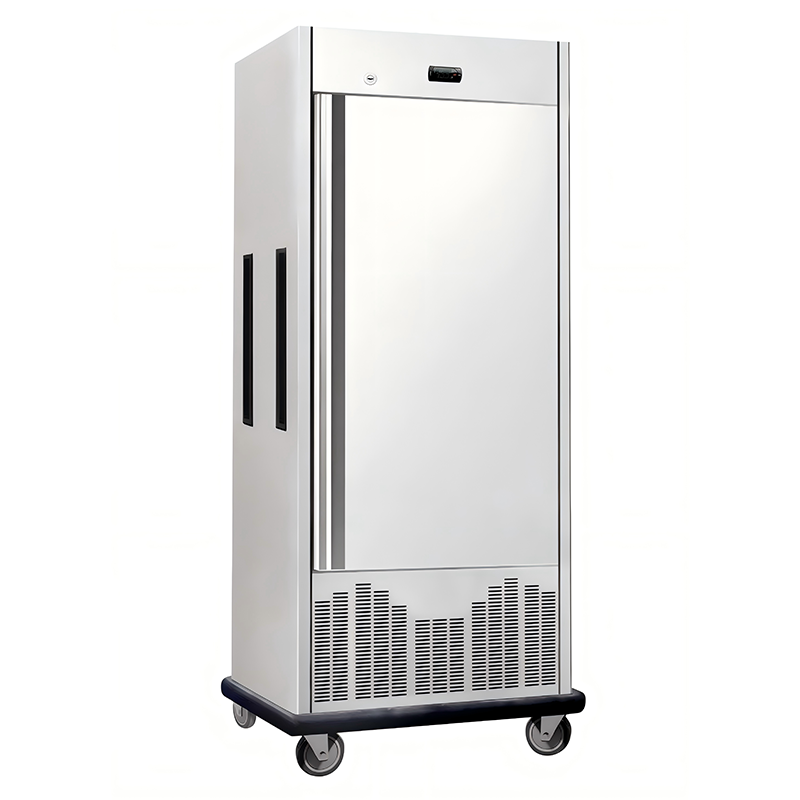Reach-in Refrigerator: Your Ultimate Buying Guide
Table of Contents
Reach-in refrigerators are a must-have for any commercial kitchen. From choosing the right type to understanding energy efficiency and costs.
this guide helps you make smart decisions that save money and boost performance.
Get ready to upgrade your storage with the perfect reach-in refrigerator!
What is a Reach-in Refrigerator?
A reach in refrigerators is a type of refrigeration unit designed for quick and convenient access to stored food and beverages.
Unlike walk-in refrigerators, reach-in models are typically upright, front-opening appliances commonly found in commercial kitchens, restaurants, stores, and food service environments.
These units are built to provide efficient cold storage while occupying a relatively small footprint, making them suitable for establishments where space is at a premium.
How Does a Reach-in Refrigerator Function?
Reach-in refrigerators operate with a refrigeration cycle that circulates cool air evenly throughout the interior. They rely on insulated walls, a compressor, evaporator, and condenser to maintain a set internal temperature.
Many modern models use fan-assisted cooling to ensure consistent temperatures on all shelves and feature digital thermostats for precise control. Automatic defrost and humidity control features are often included in commercial-grade units.
What are the Different Reach-in Refrigerator Types?
Reach in refrigerators come in various configurations to accommodate different storage needs.
Single Door Refrigerators
- Generally the most compact option, ideal for small kitchens or as supplementary storage.
- Typically offer capacities in the range of 20–30 cubic feet.
- Preferred for ease of placement and lower energy usage.
Double Door Refrigerator
- Offer more interior space, usually ranging from 45–50 cubic feet.
- Suitable for medium to large food establishments that require increased storage.
- Doors can be solid or glass, allowing visibility of stored items if needed.
- More shelving options and often adjustable interior layouts.
Triple Door Refrigerator
- Provide maximum capacity, often exceeding 70 cubic feet.
- Favored in busy commercial kitchens, catering businesses, and institutions.
- Facilitate organization by designating separate areas for various product categories.
| Type | Capacity Range | Key Features | Typical Use Cases |
|---|---|---|---|
| Single Door | 20–30 cubic feet | Compact size, easy to place | Small kitchens, supplementary storage |
| Double Door | 45–50 cubic feet | Moderate capacity, solid or glass doors | Medium to large restaurants, supermarkets |
| Triple Door | 70+ cubic feet | Large capacity, multi-zone storage | Large commercial kitchens, hotels, catering |
What is the Temperature of a Reach in Refrigerator?
Typically, reach-in refrigerators maintain temperatures between 33°F and 40°F (0.5°C–4.5°C) to keep perishable food safe and fresh. The exact temperature may be adjustable, but commercial health codes generally require food to be stored below 41°F (5°C).
Where are Reach-in Refrigerators Used?
Reach-in refrigerators are widely used in:
- Restaurants and cafes
- Bakeries and delis
- Convenience stores and supermarkets
- Hotel and institutional kitchens
- Bars and catering services
They are valued for providing easy, organized access to ingredients, prepped foods, dairy, beverages, and more.
How Much Does a Reach in Refrigerator Cost?
The cost of a commercial reach-in refrigerator varies depending on size, features, and build quality:
- Single door models: $1,200–$2,500
- Double door models: $2,000–$5,000
- Triple door models: $3,500–$7,000+
| Type | Price Range (USD) | Notes |
|---|---|---|
| Single Door | $1,200–$2,500 | Suitable for limited budgets and small-scale needs |
| Double Door | $2,000–$5,000 | Mid-range capacity with more features |
| Triple Door | $3,500–$7,000+ | High capacity for large commercial use |
| High-end Models | Above listed ranges | Includes digital controls, energy-efficient compressors, stainless steel |
High-end models with advanced features such as digital controls, energy-efficient compressors, and stainless steel construction may exceed these ranges.
Don’t Miss Out on Special Offers for Reach-in Refrigerators
Contact us now to claim limited-time deals and find the ideal refrigerator for your business. Act fast and save!
What Factors Influence the Efficiency of a Reach-in Refrigerator?
Key factors impacting efficiency include:
- Insulation quality: Better insulated units retain cold air more efficiently.
- Compressor type: Modern, variable-speed compressors use energy more selectively.
- Door construction: Tight seals and self-closing mechanisms prevent cold air loss.
- Ventilation: Proper placement ensures good airflow around the condenser.
- Usage habits: Frequent or prolonged door openings can compromise efficiency.
| Factor | Description |
|---|---|
| Insulation Quality | Better insulation retains cold air, reducing energy consumption |
| Compressor Type | Variable-speed (energy-saving) compressors are more efficient |
| Door Sealing | Good seals and self-closing doors prevent cold air leakage |
| Ventilation | Proper airflow around the unit helps condensing and cooling efficiency |
| Usage Habits | Frequent door openings cause cold air loss, lowering efficiency |
How Energy-Efficient are Reach in Refrigerators?
Contemporary reach-in refrigerators often feature energy-saving technologies, such as LED lighting, high-efficiency compressors, and better insulation.
Models with Energy Star certification can reduce energy bills by as much as 20–30% compared to standard units. Energy-saving is further improved by routine maintenance and proper temperature setting.
How to Choose the Right Reach-in Refrigerator for Your Needs?
Consider the following when selecting a reach-in refrigerator:
- Capacity and dimensions: Ensure the unit fits your available space and storage needs.
- Number of doors: Aligns with the volume and type of inventory you handle.
- Construction materials: Stainless steel offers durability and easy cleaning.
- Temperature controls: Look for digital thermostats for precise management.
- Shelving versatility: Adjustable shelves improve organization.
- Energy efficiency: Prefer models with Energy Star rating.
- Warranty and service support: Reliable after-sales service is essential.
| Selection Criteria | Explanation |
|---|---|
| Capacity and Size | Match the unit size to available space and storage needs |
| Number of Doors | Choose single, double, or triple doors based on storage volume and zoning requirements |
| Material | Stainless steel recommended for durability and ease of cleaning |
| Temperature Control | Digital thermostats allow precise control; alarm systems add safety |
| Shelving | Adjustable shelves increase flexibility in organizing items |
| Energy Efficiency | Prefer Energy Star-certified models to lower operating costs |
| Warranty and Support | Choose brands with reliable after-sales service and warranty |
What is the Difference Between a Walk-in Refrigerator and a Reach-in Refrigerator?
| Feature | Walk-in Refrigerator | Reach-in Refrigerator |
|---|---|---|
| Size | Large, room-sized | Upright appliance |
| Capacity | High, suited for bulk items | Moderate, organized storage |
| Accessibility | Users enter inside | Access by reaching in |
| Typical Use | Warehouses, big kitchens | Restaurants, bakeries, cafes |
| Installation | Permanent, requires space | Movable, fits most spaces |
Walk-in units are designed for large-scale bulk storage and high-volume operations, while reach-in refrigerators are optimized for quick access and flexibility in everyday kitchen use.
Conclusion
Reach-in refrigerators are essential for commercial food service, offering versatile, energy-efficient cold storage in a compact footprint. Understanding types, operation, features, and costs ensures you select a model that meets your needs for performance, budget, and operational efficiency.

